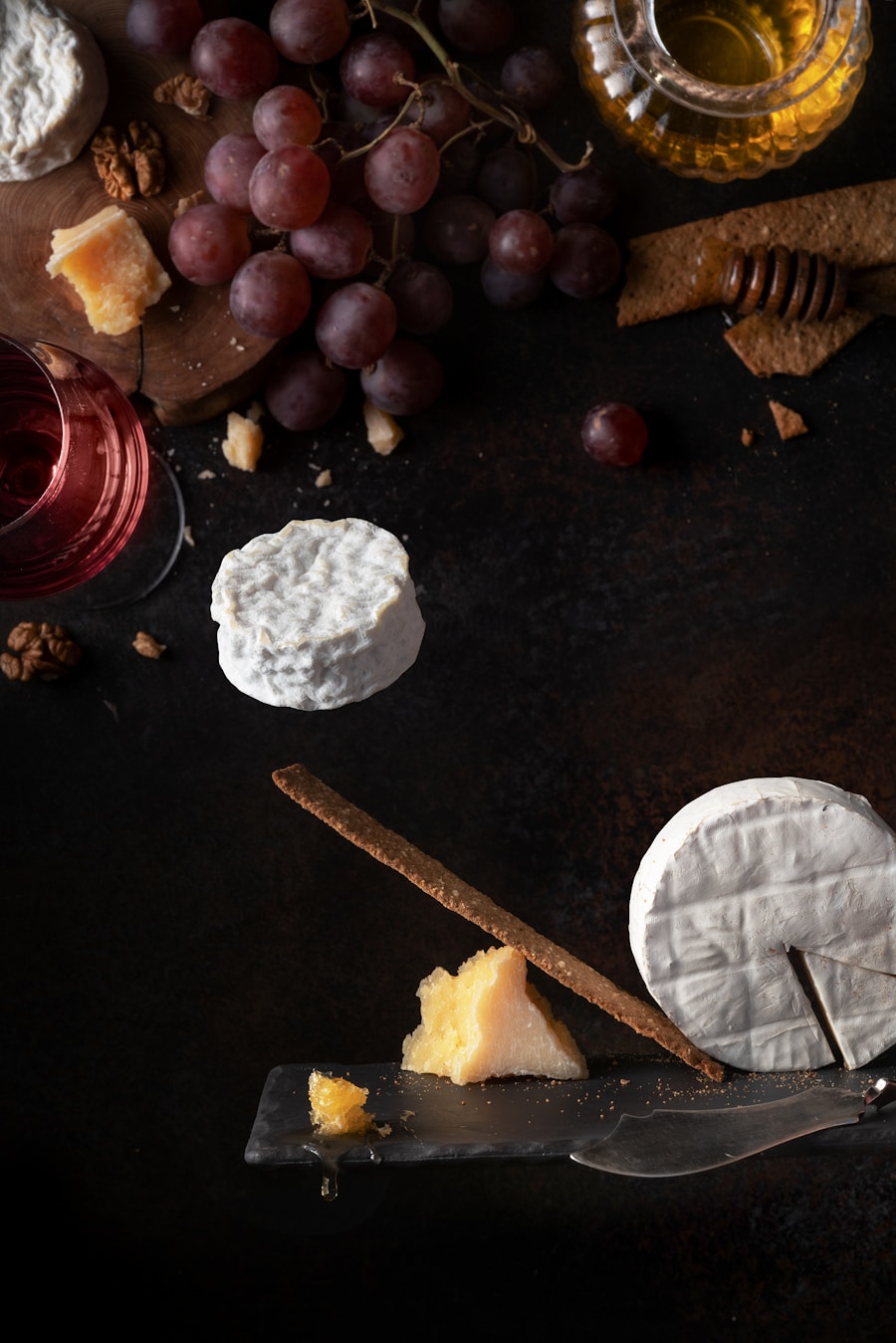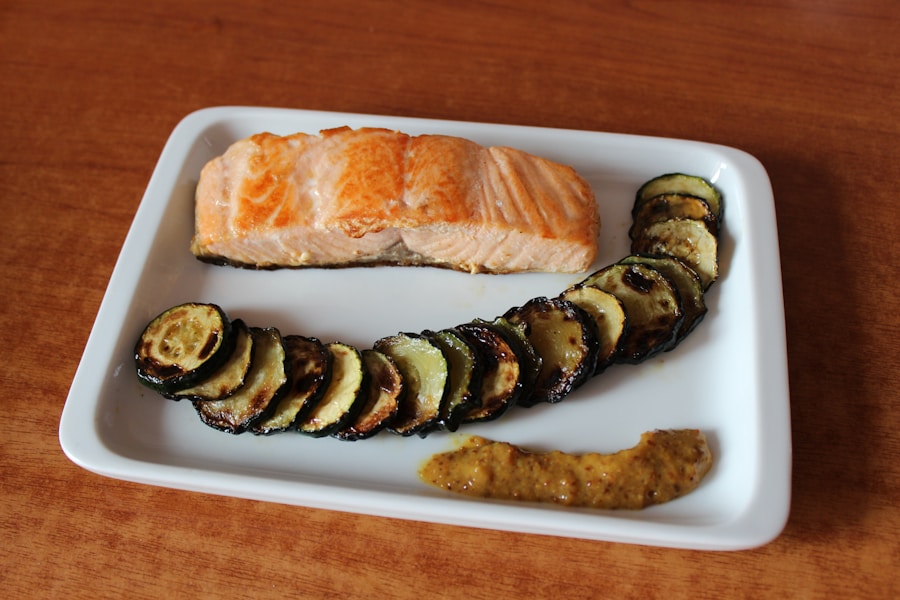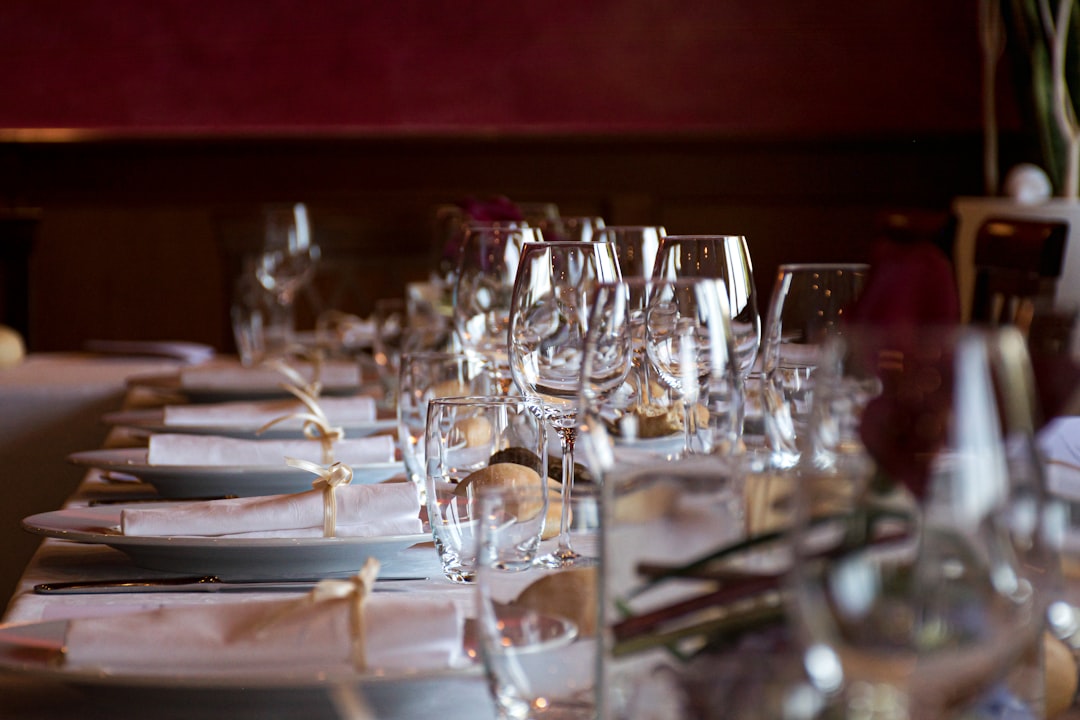Wine and food pairing is an intricate dance of flavors, aromas, and textures that can elevate a meal from ordinary to extraordinary. At its core, the principle of pairing wine with food revolves around the idea of complementing or contrasting flavors to enhance the overall dining experience. The fundamental goal is to create a harmonious balance where neither the wine nor the food overpowers the other.
This balance can be achieved through various methods, such as matching acidity levels, sweetness, and body. For instance, a high-acid wine like Sauvignon Blanc can cut through the richness of a creamy dish, while a full-bodied red like Cabernet Sauvignon can stand up to the robust flavors of grilled meats. Understanding the basic components of wine—such as acidity, tannins, sweetness, and alcohol content—is essential for successful pairing.
Acidity in wine can brighten dishes and cleanse the palate, making it an excellent match for fatty foods. Tannins, which are compounds found in grape skins and seeds, can add structure to red wines and interact with proteins in meat, enhancing the overall flavor profile. Sweetness in wine can counterbalance spicy or salty dishes, while higher alcohol content can intensify flavors.
By grasping these elements, one can begin to navigate the vast world of wine and food pairing with confidence.
Key Takeaways
- Understanding the basics of wine and food pairing is essential for enhancing the dining experience.
- The art of balancing flavors and textures involves finding complementary elements in both the wine and the food.
- Pairing wine with different types of cuisine requires considering the dominant flavors and cooking methods.
- Exploring the best wine and cheese combinations involves matching the intensity and texture of the cheese with the wine.
- Matching wine with desserts and sweet treats involves finding wines that are sweeter than the dessert to create balance.
The Art of Balancing Flavors and Textures
Balancing flavors and textures is a crucial aspect of wine and food pairing that requires a nuanced understanding of both elements. When considering flavors, one must think about the primary taste profiles present in both the wine and the dish. For example, a dish that features citrus notes, such as a lemon herb chicken, would pair beautifully with a zesty white wine like Pinot Grigio.
The bright acidity of the wine mirrors the freshness of the dish, creating a cohesive experience. Conversely, when dealing with richer dishes like beef stew, a robust red wine such as Syrah can provide a counterbalance to the dish’s hearty flavors. Texture also plays a significant role in pairing decisions.
The mouthfeel of both wine and food should be considered to create a satisfying experience. A creamy dish, such as fettuccine Alfredo, pairs well with a wine that has a similar texture—like a buttery Chardonnay. The smoothness of the wine complements the richness of the pasta, enhancing each bite.
On the other hand, pairing a light-bodied wine with a heavy dish can lead to an unbalanced experience where one element overshadows the other. Thus, understanding how to balance both flavors and textures is essential for crafting memorable pairings.
Pairing Wine with Different Types of Cuisine
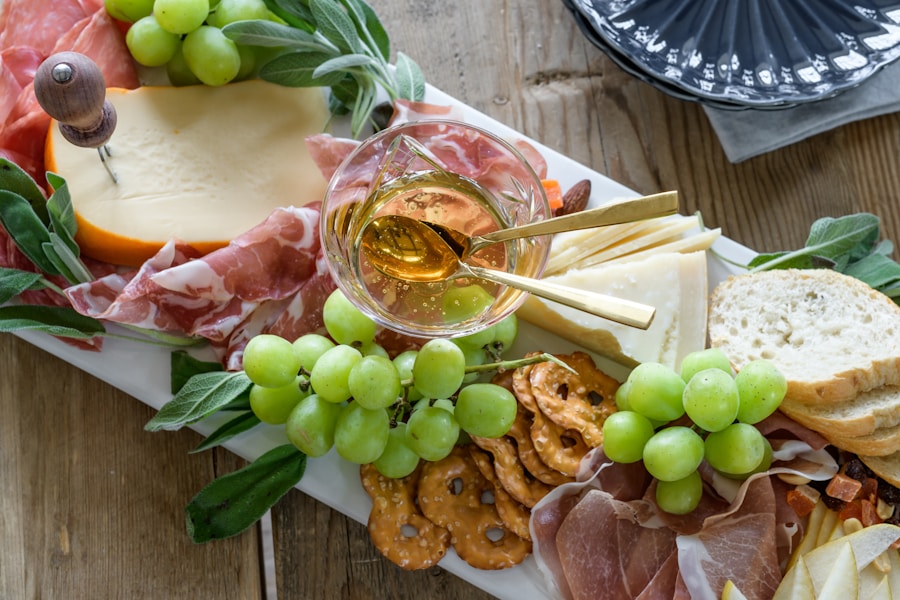
Different cuisines offer unique flavor profiles that can significantly influence wine pairing choices. For instance, Italian cuisine is renowned for its use of fresh herbs, tomatoes, and olive oil. A classic pairing would be Chianti with a traditional Margherita pizza; the wine’s acidity cuts through the cheese’s richness while complementing the tomato’s natural sweetness.
Similarly, when exploring Asian cuisines, one must consider the diverse range of flavors present. Thai food, known for its bold spices and sweetness, often pairs well with off-dry Rieslings that can balance heat while enhancing the dish’s complexity. French cuisine presents another layer of complexity due to its regional variations and emphasis on technique.
A rich coq au vin might be best enjoyed with a Pinot Noir from Burgundy, where the wine’s earthy undertones echo the dish’s flavors. In contrast, lighter dishes such as salads or seafood may benefit from crisp white wines like Muscadet or Sauvignon Blanc. Each cuisine has its own set of rules and traditions regarding wine pairing, making it essential for enthusiasts to explore these nuances to find their ideal matches.
Exploring the Best Wine and Cheese Combinations
| Wine Type | Cheese Type | Recommended Pairing |
|---|---|---|
| Chardonnay | Brie | Rich, creamy Brie complements the buttery notes of Chardonnay |
| Merlot | Gouda | The bold flavor of Gouda pairs well with the fruity notes of Merlot |
| Sauvignon Blanc | Goat Cheese | The tangy flavor of goat cheese contrasts nicely with the crispness of Sauvignon Blanc |
| Pinot Noir | Camembert | The earthy flavors of Camembert complement the light, fruity notes of Pinot Noir |
The combination of wine and cheese is one of the most celebrated pairings in culinary culture. The diversity of both cheese types and wines allows for endless possibilities that can cater to various palates. A classic example is pairing Brie cheese with Champagne; the creamy texture of Brie complements the effervescence and acidity of Champagne beautifully.
This combination not only enhances the flavors but also creates an elegant experience that is perfect for celebrations. Another popular pairing is blue cheese with dessert wines like Sauternes or Port. The rich, pungent flavor of blue cheese contrasts wonderfully with the sweetness of these wines, creating a delightful balance that excites the palate.
For those who prefer firmer cheeses like aged Gouda or Parmigiano-Reggiano, consider pairing them with robust red wines such as Cabernet Sauvignon or Barolo. The tannins in these wines interact harmoniously with the cheese’s saltiness and umami notes, resulting in a satisfying tasting experience. Exploring these combinations can lead to delightful discoveries that enhance both cheese and wine.
Matching Wine with Desserts and Sweet Treats
Pairing wine with desserts requires careful consideration of sweetness levels and flavor profiles to ensure that neither element overwhelms the other. A common approach is to match sweet wines with desserts that are equally sweet or slightly less sweet. For example, a rich chocolate cake pairs beautifully with a full-bodied dessert wine like Banyuls or a late-harvest Zinfandel; both options enhance the chocolate’s depth while providing a luscious mouthfeel.
Fruity desserts also offer exciting pairing opportunities. A classic fruit tart can be complemented by a sparkling Moscato d’Asti; its light sweetness and effervescence elevate the tart’s fresh fruit flavors without overshadowing them. Additionally, creamy desserts like panna cotta or cheesecake often pair well with dessert wines that have good acidity, such as Riesling or Tokaji Aszú.
These wines cut through the richness of the dessert while enhancing its flavor profile, creating an enjoyable balance that leaves a lasting impression.
Tips for Pairing Wine with Spicy Foods
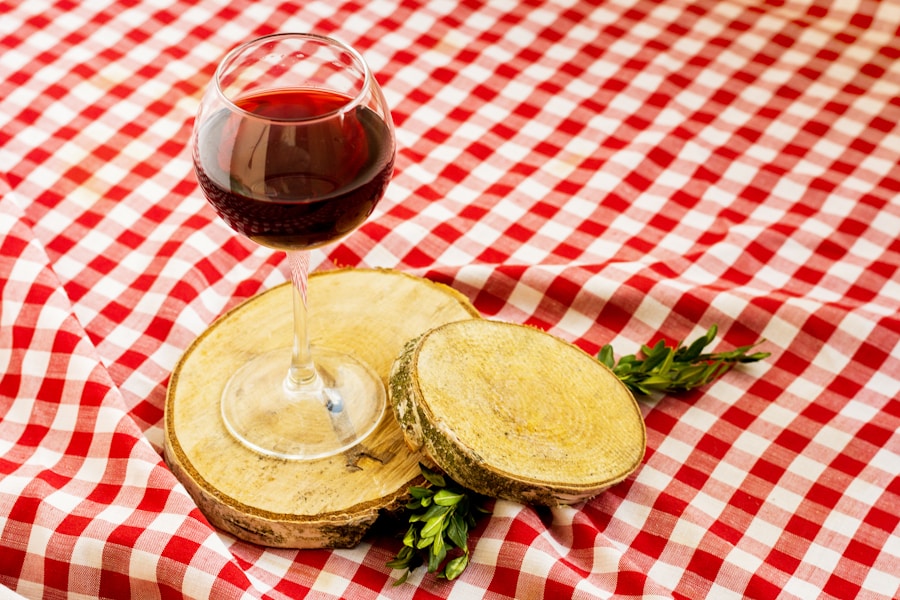
Pairing wine with spicy foods can be particularly challenging due to the heat’s potential to overwhelm delicate flavors in both food and wine. However, certain strategies can help navigate this culinary landscape effectively. One effective approach is to choose wines that possess some sweetness or fruitiness to counterbalance spiciness.
Off-dry Rieslings or Gewürztraminer are excellent choices for spicy Asian dishes; their natural sweetness helps temper heat while enhancing aromatic spices. Another consideration is selecting wines with lower alcohol content since higher alcohol levels can intensify the perception of heat in spicy foods. Light-bodied reds like Pinot Noir or chilled rosés can provide refreshing options that complement spicy dishes without adding to their heat.
Additionally, sparkling wines are often versatile companions for spicy cuisine; their effervescence cleanses the palate between bites while providing a refreshing contrast to bold flavors.
Creating the Ultimate Wine and Charcuterie Board
A well-curated charcuterie board offers an excellent opportunity to explore various wine pairings in one sitting. The key to creating an ultimate charcuterie board lies in balancing flavors and textures while incorporating diverse elements such as cured meats, cheeses, fruits, nuts, and spreads. When selecting wines for your board, consider offering a range that complements each component.
For instance, if your board features rich meats like prosciutto or salami, consider pairing them with medium-bodied reds such as Merlot or Chianti that enhance their savory qualities without overpowering them. For cheeses, you might include a creamy Brie alongside a crisp Sauvignon Blanc or a sharp aged cheddar paired with an oaky Chardonnay. Adding fresh fruits like grapes or figs can provide natural sweetness that pairs well with sparkling wines or light-bodied whites like Pinot Grigio.
By thoughtfully selecting each element on your charcuterie board and its corresponding wine pairings, you create an interactive tasting experience that invites exploration and enjoyment.
The Importance of Personal Preference in Wine and Food Pairing
While there are established guidelines for wine and food pairing, personal preference ultimately plays a significant role in determining what works best for each individual palate. Taste is subjective; what one person finds delightful may not resonate with another. Therefore, it is essential to encourage experimentation and exploration when it comes to pairing choices.
Encouraging individuals to trust their instincts can lead to surprising discoveries that defy conventional wisdom. For example, someone might find that they enjoy pairing spicy Thai food with an unexpected Cabernet Sauvignon rather than a traditional Riesling; this personal preference could stem from their unique taste profile or fond memories associated with certain flavors. Ultimately, embracing personal preferences allows for a more enjoyable dining experience where individuals feel empowered to make choices that resonate with their tastes rather than adhering strictly to established norms.
In conclusion, understanding the intricacies of wine and food pairing involves exploring various elements such as flavor balance, texture harmony, and personal preferences. By delving into different cuisines and experimenting with combinations like cheese and wine or desserts and sweet treats, one can cultivate an appreciation for this art form that enhances culinary experiences across diverse settings.
